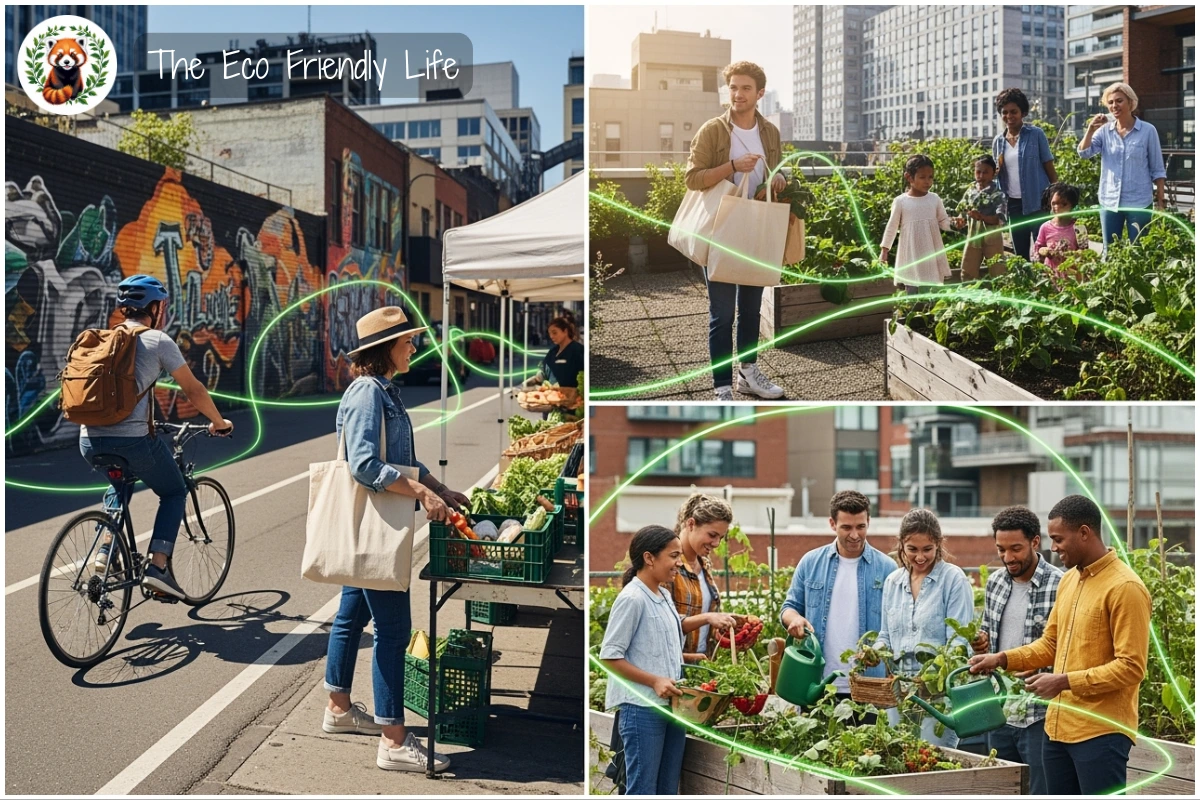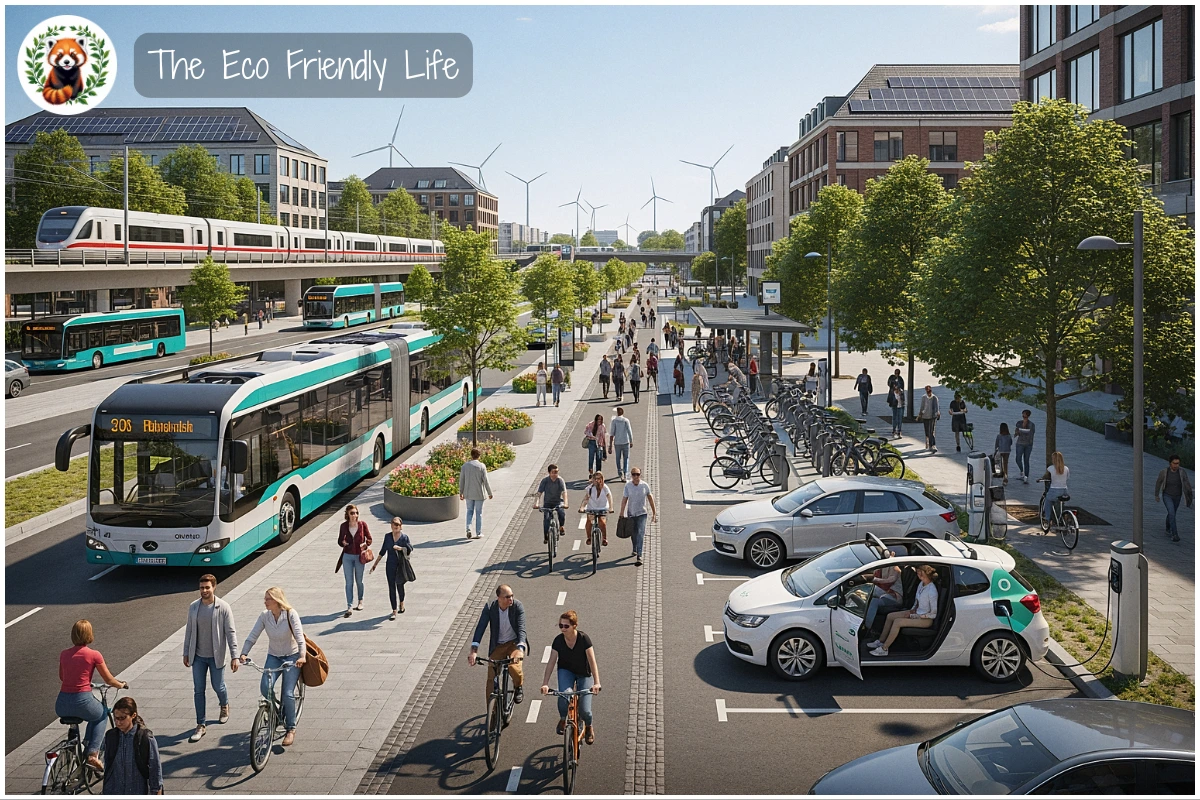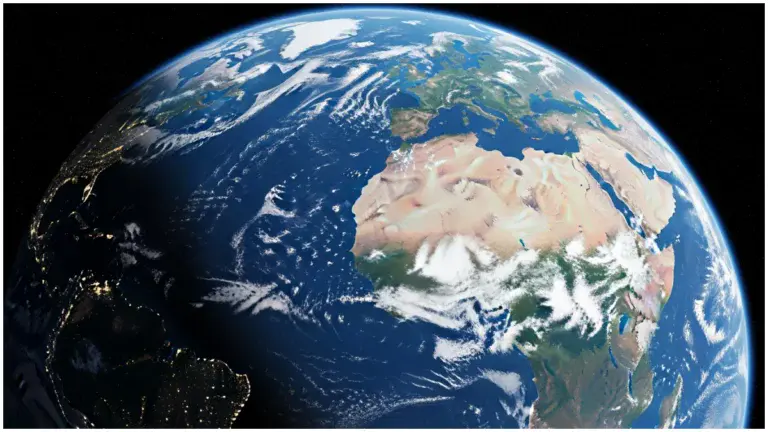The environmental challenges facing our planet today are more urgent than ever before. From climate change and biodiversity loss to pollution and resource depletion, the evidence is overwhelming that immediate action is required to protect our shared home. Yet within these challenges lies opportunity – each of us has the power to make a meaningful difference through our daily choices and actions.
I’m Al, and I’m excited to share this journey of environmental discovery with you. Whether you’re just beginning to explore sustainable living or looking to deepen your existing environmental awareness, this article will provide you with practical knowledge and actionable steps to help protect our planet. Together, we’ll explore how individual actions, when multiplied across millions of people, create powerful waves of positive change that can transform our world. Let’s discover how you can become an active participant in safeguarding the environment for future generations.
Understanding Our Environmental Impact
Personal footprint awareness: Understanding your environmental impact begins with recognizing that while global CO2 emissions have increased dramatically since the 1960s, individual choices remain powerful tools for change. Each person’s carbon footprint represents their contribution to these global emissions through daily activities like transportation, energy use, and consumption patterns.
Daily choices matter: Every action throughout your day creates environmental consequences. Switching to veganism can save approximately 0.8 tonnes of CO2 equivalents per year, while living car-free saves 2.4 tonnes annually. These individual actions demonstrate how personal choices can achieve measurable environmental benefits when adopted consistently over time.
Consumer influence drives change: Your purchasing power represents one of the most potent tools for environmental change. When consumers consistently choose sustainable products and services, businesses respond by adapting their practices to meet this demand. This market-driven approach creates systemic change that extends far beyond individual households, influencing entire industries to adopt more environmentally responsible practices.

The connection between individual actions and collective environmental impact demonstrates that personal responsibility and systemic change work hand in hand. As we delve deeper into specific areas where you can make a difference, you’ll discover that reducing energy consumption at home provides one of the most immediate and impactful ways to lower your environmental footprint.
Reducing Energy Consumption at Home
Smart appliance management: Switching off appliances at the wall when not in use can significantly reduce your energy consumption, as many electronic devices continue drawing power in standby mode. Using power boards allows you to easily turn off multiple appliances simultaneously, while LED bulbs use 80% less energy than traditional incandescent bulbs and last significantly longer.
Temperature control strategies: Adjusting your thermostat by just a few degrees can create substantial energy savings – setting cooling between 25°C and 27°C in summer and heating between 18°C and 20°C in winter optimizes both comfort and efficiency. Proper insulation and draught-proofing help maintain desired temperatures with less energy input, while using fans before air conditioning provides cost-effective cooling alternatives.
Water heating efficiency: Simple changes in water usage patterns can dramatically reduce energy consumption. Washing clothes in cold water uses significantly less energy than hot water washing, while taking shorter showers and fixing leaky taps prevents unnecessary energy waste associated with water heating systems.

These energy reduction strategies create a foundation for sustainable living that reduces both environmental impact and household utility costs. Building on these home-based changes, your transportation choices offer another significant opportunity to reduce your environmental footprint through sustainable mobility options.
Sustainable Transportation Choices
Active transportation benefits: Walking and cycling represent the most environmentally friendly transportation options, producing zero emissions while providing health benefits and reducing traffic congestion. When destinations are within reasonable distance, these active modes of transport offer immediate environmental benefits while creating opportunities for regular physical activity and community connection.
Public transport advantages: Utilizing buses, trains, and other public transport systems significantly reduces per-person carbon emissions compared to individual car use. Many cities now offer bike-sharing programs that complement public transport networks, allowing for multi-modal journeys that maximize environmental benefits while maintaining convenience.
Shared mobility solutions: Carpooling with coworkers, neighbors, or friends reduces the number of vehicles on the road while distributing fuel consumption and emissions across multiple passengers. This approach creates social connections while demonstrating how collaborative approaches to transportation can achieve environmental benefits without sacrificing mobility needs.

The transition to sustainable transportation often requires planning and initial adjustment, but the environmental benefits become apparent quickly. As you develop these sustainable mobility habits, you’ll want to explore educational resources that can deepen your understanding of environmental issues and provide ongoing motivation for your environmental journey.
Retailers That Support the Planet – Our Product Recommendations
Environmental education and awareness form the foundation of meaningful environmental action. These carefully selected retailers offer valuable learning opportunities that can deepen your understanding of environmental issues and inspire continued engagement with sustainable practices.
Our Retailer Recommendation for Adults
FutureLearn – Comprehensive Environmental Education
FutureLearn offers an extensive catalog of sustainability and environmental courses designed for adult learners seeking to understand complex environmental challenges. Their platform provides flexible, expert-led courses covering topics from climate science and renewable energy to sustainable business practices and environmental management, making advanced environmental education accessible to busy adults worldwide.
Our Retailer Recommendation for Kids/Families
Green Kid Crafts – Environmental Education for Families
Green Kid Crafts specializes in delivering monthly subscription boxes filled with nature-based science, technology, engineering, arts, and mathematics activities for children aged 2-10. Founded by environmental scientist Penny Bauder, their award-winning program combines creative learning with environmental education, helping families raise environmentally conscious children through hands-on exploration and discovery.
These educational resources complement your environmental journey by providing structured learning opportunities that deepen understanding and inspire continued action. As you expand your knowledge through these platforms, you’ll be better equipped to tackle one of the most impactful areas of environmental action: reducing waste and making more conscious consumption decisions.
Waste Reduction and Sustainable Consumption
Single-use elimination strategies: Replacing disposable items with reusable alternatives creates immediate waste reduction while often providing long-term cost savings. Investing in reusable water bottles, coffee cups, shopping bags, and food containers eliminates thousands of single-use items from your consumption pattern while demonstrating commitment to sustainable practices.
Food waste prevention: Meal planning and proper food storage significantly reduces food waste, which represents a major source of greenhouse gas emissions. Creating designated “use first” areas in your refrigerator and pantry, learning optimal storage techniques for different foods, and repurposing leftovers into new meals maximizes the value of your food purchases while minimizing environmental impact.
Conscious purchasing decisions: Buying less and choosing quality items that last longer reduces both resource consumption and waste generation. Before making purchases, implementing waiting periods allows you to distinguish between wants and needs, while exploring second-hand options, borrowing, or renting items reduces demand for new product manufacturing.

These waste reduction strategies create environmental benefits while often improving household organization and reducing expenses. With these foundational practices in place, you can now implement specific daily actions that will immediately begin reducing your environmental impact.
Practical Daily Tips You Can Action Today
| Tip | Implementation | Community Impact |
|---|---|---|
| Switch to LED light bulbs | Replace incandescent bulbs as they burn out | Reduces energy consumption by up to 80% and decreases carbon emissions |
| Take shorter showers | Set timer for 5-minute showers | Conserves water and reduces energy needed for water heating |
| Unplug electronics when not in use | Create habit of unplugging devices after use | Eliminates phantom energy consumption and reduces electricity bills |
| Start composting food scraps | Set up simple compost bin or use municipal collection | Diverts organic waste from landfills and reduces methane emissions |
| Walk or bike for short trips | Plan active transportation for distances under 2 miles | Eliminates vehicle emissions and improves personal health |
| Use a reusable water bottle | Carry bottle and refill from tap or filtered water | Prevents plastic bottle waste and reduces manufacturing demand |
| Air dry clothes instead of using dryer | Hang clothes on line or drying rack | Significantly reduces energy consumption from appliance use |
| Buy local and seasonal produce | Shop at farmers markets or choose seasonal items | Reduces transportation emissions and supports local agriculture |
| Reduce meat consumption | Plan one or more plant-based meals per week | Decreases agricultural emissionsand resource consumption |
These actionable tips provide immediate opportunities to reduce your environmental footprint while developing sustainable habits that compound over time. As you implement these changes, you might have questions about their effectiveness or encounter common concerns about individual environmental action.
FAQs
Common questions about individual environmental action
Q: Can individual actions really make a difference when corporations cause most pollution?
A: While corporations have significant environmental impact, consumer demand drives business practices, and individual actions create market signals that influence corporate behavior. Personal actions also build environmental awareness and support for policy changes that create systemic transformation.
Q: What’s the most impactful environmental action an individual can take?
A: Reducing meat consumption, using energy-efficient transportation, and decreasing overall consumption tend to have the highest environmental impact, though the most effective actions vary based on individual circumstances and regional factors.
Q: How can I stay motivated when environmental problems seem overwhelming?
A: Focus on the positive changes you can control, connect with like-minded communities for support, celebrate small victories, and remember that environmental action often improves quality of life through cost savings and health benefits.
Q: Is buying eco-friendly products worth the extra cost?
A: Many sustainable products provide long-term savings despite higher upfront costs, while supporting businesses that prioritize environmental responsibility helps drive broader market changes toward sustainability.
Organizations to Support – Our Recommendations
Leading global environmental organizations making measurable impact
- World Wildlife Fund (WWF) works to conserve nature and reduce threats to biodiversity through science-based conservation efforts across six key areas including forests, oceans, and climate. Their global reach and focus on protecting endangered species and critical habitats makes them one of the most impactful organizations for supporting comprehensive environmental protection through their donation platform.
- Greenpeace International campaigns for environmental protection through peaceful direct action, scientific research, and policy advocacy to address climate change, deforestation, and pollution. Their grassroots approach to environmental activism and focus on holding corporations and governments accountable creates systemic change through supporting their campaigns.
- The Nature Conservancy protects ecologically important lands and waters for nature and people through science-based conservation strategies, having protected over 125 million acres globally. Their collaborative approach with communities, governments, and businesses creates lasting conservation solutions accessible through their membership program.
These organizations represent different approaches to environmental protection, from conservation and research to advocacy and direct action, allowing you to support the strategies that align with your environmental priorities.
Resources and Further Reading
Comprehensive sources for deepening environmental knowledge
- UNESCO Education for Sustainable Development provides educational resources, policy guidance, and implementation frameworks for integrating environmental education into formal and informal learning contexts globally. Their comprehensive approach to environmental education offers tools for individuals, educators, and organizations to develop environmental literacy at unesco.org/en/sustainable-development/education.
- United Nations Sustainable Development Goals offers detailed information about the 17 global goals for environmental and social sustainability, including specific targets, indicators, and progress tracking. This framework provides context for understanding how individual actions connect to global environmental objectives through undp.org/sustainable-development-goals.
- Our World in Data – Greenhouse Gas Emissions presents comprehensive, data-driven analysis of global and national emissions, climate change trends, and environmental indicators with interactive visualizations. This resource enables evidence-based understanding of environmental challenges and progress at ourworldindata.org/greenhouse-gas-emissions.
These resources provide scientific foundations and practical frameworks for understanding environmental issues and implementing effective solutions at both individual and collective levels.
Our Related Articles

Climate Change: Causes, Effects And Solutions
The planet we call home is sending us urgent signals. From unprecedented heatwaves scorching cities to devastating floods reshaping coastlines, climate change has moved from…
Read More
Your Guide To Key Environmental Terms
Understanding the language of environmental science is the first step toward becoming an informed planetary citizen. Whether you’re hearing about climate policies on the news,…
Read MoreConclusion
Environmental protection requires both individual action and collective commitment, and your daily choices play a crucial role in creating the sustainable future our planet needs. From reducing energy consumption and embracing sustainable transportation to making conscious consumption decisions and supporting environmental organizations, each action contributes to a larger movement for environmental protection.
The path to environmental sustainability isn’t about perfection – it’s about progress, awareness, and consistent effort toward better choices. As you implement these practices, you’ll discover that environmental action often improves your quality of life while reducing costs and connecting you with communities of like-minded individuals.
Your environmental journey matters, and every positive choice you make creates ripples of influence that extend far beyond your immediate impact. What environmental action will you start with today, and how do you envision your lifestyle evolving as you continue learning about sustainable living? Share your thoughts and experiences in the comments below – your insights might inspire others to begin or expand their own environmental journey.


